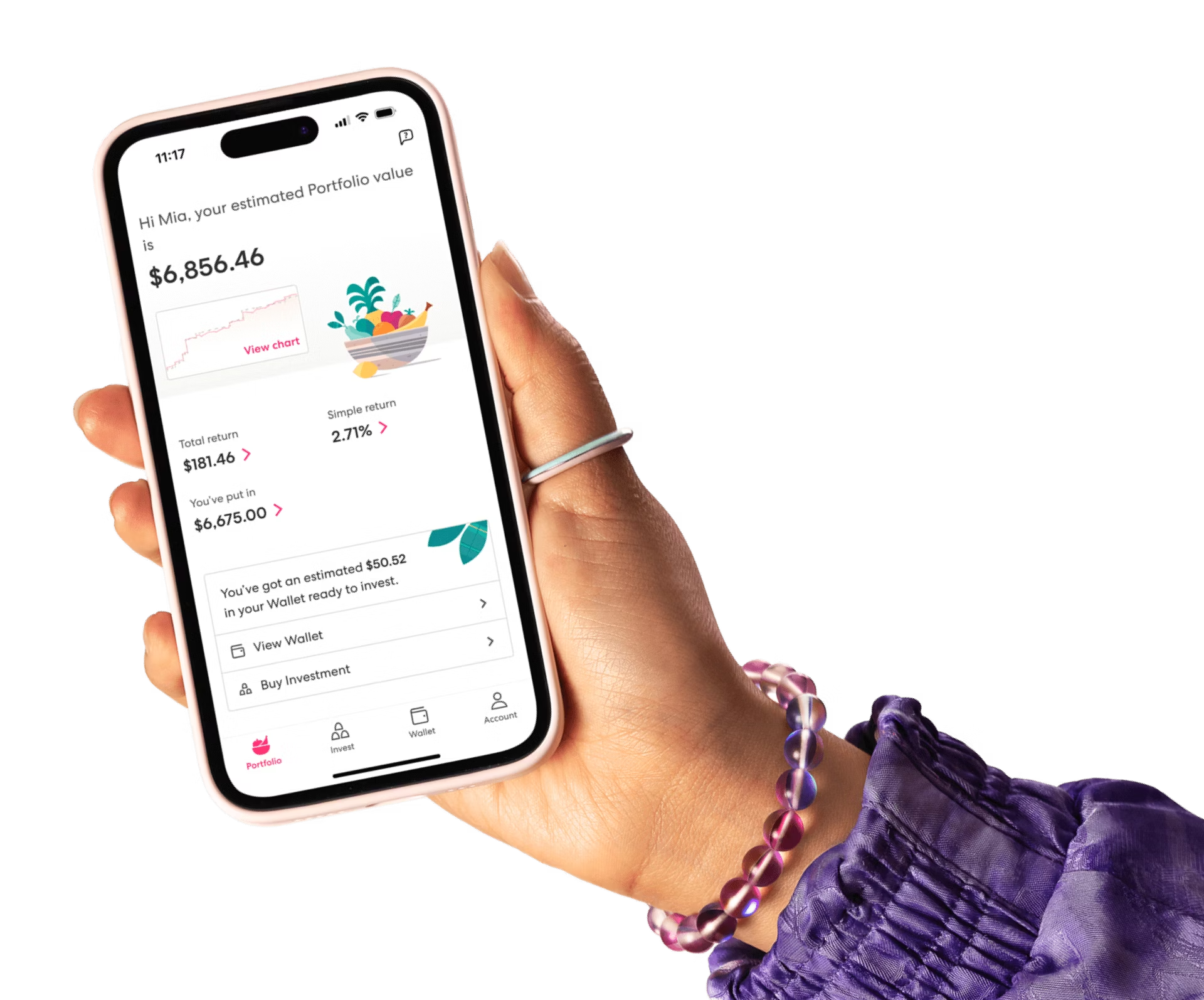What's an exchange-traded fund (ETF)?
Exchange-traded funds (ETFs) are like the investing world’s bundle deal, so should you consider adding them to your Portfolio?

What’s an ETF?
Imagine you’re browsing through fruit at a farmers’ market. You could pick out a single pineapple, or buy a basket brimming with different types of fruit. Your basket might have a little of everything, or it might be grouped in a particular way—like citrus fruits, or your seasonal specialties.
Exchange-traded funds (ETFs) are like the fruit basket of the share market.
F = fund
When you invest in an ETF, your money is pooled together with other investors to buy into a basket of investments (called a fund). ‘Units’ represent your ownership of a slice of this overall fund.
So while you may only hold one unit in a fund, that one unit represents a holding in all of the underlying investments of the fund—which could be many kinds of investments.
ET = exchange-traded
Unlike units in managed funds, which are traded directly through a fund provider, ETFs trade on an exchange (like the New Zealand Stock Exchange).
Why invest in an ETF?
Diversification
ETFs give you a way to diversify your investments (spread your money across lots of different things).
Investing in one company means you’re completely dependent on the performance of that one company. If your money is spread across lots of different investments, you take less of a hit if one of your investments loses value.
Of course, you could do this by buying lots of individual investments—but ETFs let you do this in one go.
Transparency
Because ETFs are listed on an exchange, the unit price is updated when the exchange is open for trading—compared to managed funds, which generally only report their unit prices retrospectively.
Liquidity
As well as the price being updated more regularly, ETFs are also able to be bought and sold at any time the exchange is open (provided there are buyers and sellers!)—which can make them a more liquid investment than managed funds.
Depending on your investment horizon, this may or may not be relevant—but it can help if you might need the money sooner!
Index versus active
The investments in an ETF aren't chosen at random—they’re designed to follow a set of rules or conditions. ETFs generally fall into two fund management styles (active or passive investing), which in turn create index ETFs and active ETFs.
Index ETFs
Index ETFs try to match (or ‘track’) the performance of an index, by investing in things that are included on that index. These ETFs fall under the umbrella of a ‘passive’ investing strategy.
This passive approach means index ETFs tend to broadly follow the movements of an industry, theme, or the overall market—depending on the focus of the index and how closely the ETF tracks the index.
Keep in mind, though, that not all index ETFs are the same, even if they’re tracking the same thing!
Active ETFs
With active ETFs, fund providers actively pick investments based on their own criteria. An index might still be used as a guide or benchmark, but there’ll be analysts actively managing what’s included.
Active ETFs usually come with increased fees to cover any additional fund provider costs (like salaries and other research).
What ETFs can I invest in?
Across those fund management styles, there are thousands of ETFs you can invest in, including:
Broad market index ETFs
A broad market index ETF tracks an index across an exchange, like the NZX 50 or S&P 500—attempting to mirror the performance of the share market as a whole.
Thematic
Thematic ETFs are focused on a specific theme, trend, or sector—whether it be renewable energy, healthcare, gender diversity, or video gaming … the list goes on! These can be actively or passively managed, selecting investments or tracking indices that meet a certain criteria.
ESG
A subset of thematic ETFs are ESG (environmental, social, governance) funds. These provide an opportunity to invest in responsible companies across industry, country, or asset type. Some even focus on specific areas of responsible ESG practices, like clean energy or women-led companies.
Some are passively managed, tracking an ESG index. Others actively include investments that meet a certain responsible standard, or track a larger index and then exclude companies that fail that standard.
ETFs and you
Now that you know how ETFs work, you can take a look at whether they make sense for your portfolio and broader investing strategy. Do your due diligence and check the fund’s product disclosure statement (PDS) before you invest. It’ll include information on:
what index, sector, or asset the ETF return aims to replicate
the fees and costs
the risks of investing in the ETF
how to complain if you have a problem with the ETF.
You can also check the monthly and quarterly reports for a glimpse of the funds’ holdings. If you have questions about an ETF, you can contact the fund provider or speak to a licensed financial adviser. You can also check recent market announcements on the exchange’s website for new information on an ETF.
Ok, now for the legal bit
Investing involves risk. You aren’t guaranteed to make money, and you might lose the money you start with. We don’t provide personalised advice or recommendations. Any information we provide is general only and current at the time written. You should consider seeking independent legal, financial, taxation or other advice when considering whether an investment is appropriate for your objectives, financial situation or needs.
Join over 800,000 investors



